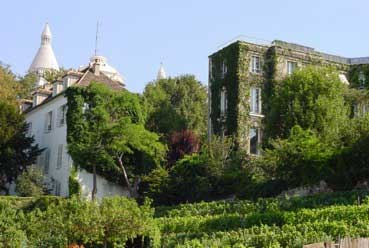The Ile-de-France Wine Trail
The History of Wine in Ile-de-France
Long ago, and until the eighteenth century, Ile-de-France was home to France’s largest wine growing region, covering an area of 42,000 hectares and involving 300 different towns and villages. Noblesse oblige, and with the difficulties in transportation at the time, the royal court needed something to drink!
Wine production, which dated back to the fourth century, was therefore destined either for the royal court or for export. Unfortunately, time took its toll on the region’s vineyards, which disappeared almost entirely by the 1950s. Only a hundred or so vines with more than 100 cordons are left: that’s all that remains of Ile-de-France’s wine-growing heritage.
Today, wine production is not economically viable to sustain the majority of these vineyards, and instead they focus on tourism, teaching, and cultural activities.
Wines events in Paris
-
 from
75 €
per pers.
from
75 €
per pers.
-
 from
49 €
per pers.
from
49 €
per pers.
Where to see vines in Paris
Paris is home to the most famous, and undoubtedly the most iconic vineyard in the region: the Commanderie, which produces Clos Montmartre on the northern slope of the hill in the 18th eighteenth district that bears the same name. Production is limited, but is culturally significant, with 1,003 bottles being produced each year. The vineyard is also the venue for the Montmartre harvest festival, where the wine that is produced is sold at auction.

Also in Paris, the Jardin des Plantes has 247 wine cordons, with a surprising mix of varieties that you can explore and taste. A surprise discovery is the Clos de Chantecoq, surrounded by the skyscrapers of La Défense. This 700-cordon vineyard grows Chardonnay and Pinot Noir over an area of 1,000 square metres and, although the wines are not sold, they are available for tasting. This brief tour through Paris’s vineyards would not be complete without mentioning the famous wine museum, the Musée du Vin, located on the Rue des Eaux in the sixteenth district of central Paris!
Discover other France wine routes
- The Burgundy Wine Trail
- The Bordeaux Wine Trail
- The Alsace Wine Trail
- The Champagne Route
- The Loire Valley Wine Trail
- The Languedoc-Roussillon Wine Trail
- The Provençal Wine Trail
- The Rhone Valley Wine Trail
- The Beaujolais Wine Trail
- The Southwestern Wine Trail
- The Jura Wine Trail
- The Savoy Wine Trail
- The Corsican Wine Trail
